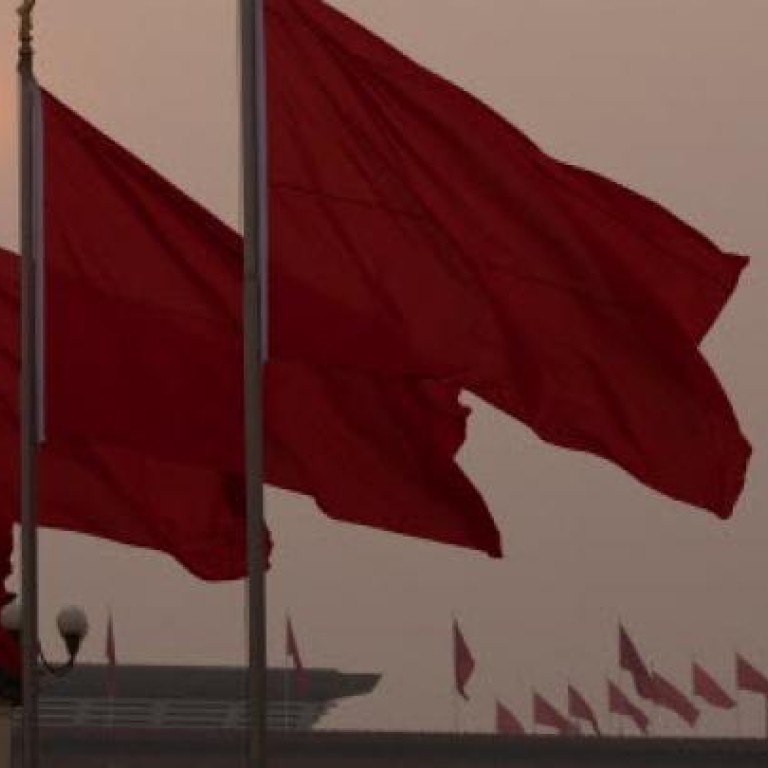
China's narrative of Han expansion
Philip Bowring says that China's focus on its role as a victim of past humiliationsis tempered by the historical spread, both inside and outside its current borders, of its largest ethnic group
With the 18th party congress behind us and Xi Jinping now installed as leader, can China ease off on the narrative of victimhood which has been so apparent in recent months? The main target may have been Japan, but 100-plus years of humiliation at the hands of Westerners, Japanese and Russians have provided a constant refrain not only to be contrasted with today's high standing, but also to justify, for some, thoughts of revenge.
The victim narrative is true, but it is not the only one. There is a parallel narrative that is equally true and of which China's neighbours are acutely aware. The successful early Qing dynasty vastly expanded the frontiers, bringing their native Manchuria, adding Xinjiang and Mongolia and establishing a presence of sorts on Taiwan. But then the period of greatest weakness of the Chinese state - as represented by the alien Qing dynasty, and then, until 1980, by either weak or inward-looking regimes - coincided with a dramatic expansion of the Han Chinese footprint. This was driven partly by demographics and partly by the weakness of the state. Out of a Manchu/Qing empire emerged a Han nation with relatively few minorities. The paradox of weakness and expansion is significant - and contains the seeds of reversal.
Take Manchuria itself, the ancestral home of the Jurchen tribes who formed the Manchu dynasty. For almost 200 years after their conquest of China, they prevented Han settlement of what are now Liaoning , Jilin and Heilongjiang as well as that part of old Manchuria that is now Russian. For sure, the ban had loopholes, and many Han settled regardless. But it took a Russian threat in the mid-19th century for Beijing in 1860 to open the floodgates to settlement by Han and develop the pastures into arable land. It was further encouraged during the rule of warlord Zhang Zuolin . Assimilation and war deaths added to the Manchu decline so that those who identity themselves as Manchu now amount to 7 per cent of the combined population of Liaoning, Jilin and Heilongjiang at most.
The demographic dynamics of Chinese Mongolia have been quite similar. The Han settlement of southern (Inner) Mongolia was promoted in the 19th century as a buffer against Russia. Thus, by 1945, the province was 80 per cent Han. But fearful that their land would suffer similar Han colonisation, leaders of Outer Mongolia turned to Russia for protection in 1911. Under communism, that proved brutal, but it ensured no such influx of settlers, which explains why today it is independent and its population is almost all Mongol.
In the cases of both Manchuria and Mongolia, Japan's rise and defeat of Russia in 1904 stopped the Russian advance and thus helped much of Manchuria and Mongolia to remain Chinese-ruled, and the Han settlement to continue.
Xinjiang had been under China's rule on and off for centuries and was brought firmly under Qing control in the 18th century when a Han minority settled in the north. Many left or were driven out following the collapse of the Qing government and, by 1953, just 7 per cent of the region's population were Han, so it needed massive immigration to bring the percentage up to today's 40 per cent - and over 70 per cent in the cities of Urumqi and Karamay.
Taiwan was saved from probable incorporation into the Spanish-ruled Philippines by the Dutch, and the alien Qing dynasty was the first to assert sovereignty over the island. Most settlement by the Han was informal and did not come until very late in the Qing period. But Taiwan was a fractured entity in terms of settlement and wasn't administered as a single entity until China ceded the island to Japan in 1895.
Last but not least of the contributions to Qing humiliations by Westerners was the expansion of overseas Chinese communities. Western-driven trade and imperialism in the 19th century spurred migration into Southeast Asia and then to the Americas and elsewhere. China's rapidly growing population was recruited to work in British Malaya and Singapore and the Dutch East Indies, while hundreds of thousands more joined existing Chinese communities in Burma, Siam and elsewhere.
This expansion of the Han presence both inside and outside the current borders of the People's Republic was not just a coincidence. It was linked to China's mix of political weakness and demographic strength. The Qing bequeathed an empire which had rarely been bigger and certainly had never been so Han.
Political and military strength is now China's guardian against humiliation, but a stagnating population is a danger, as Russia found when ethnic Russians either failed to procreate as fast as their Kazakh and other neighbours, or simply found life on the fringes of the empire too harsh. China's neighbours are now in awe of its power. But on the fringes of China, non-Han are breeding faster, and neighbours such as Vietnam and Korea have become fierce defenders of their own cultures and borders. The more China focuses on avenging past humiliations, the more it will raise awareness among neighbours of the previous 200 years of mostly Qing-era expansion of the Han state and its global presence.

